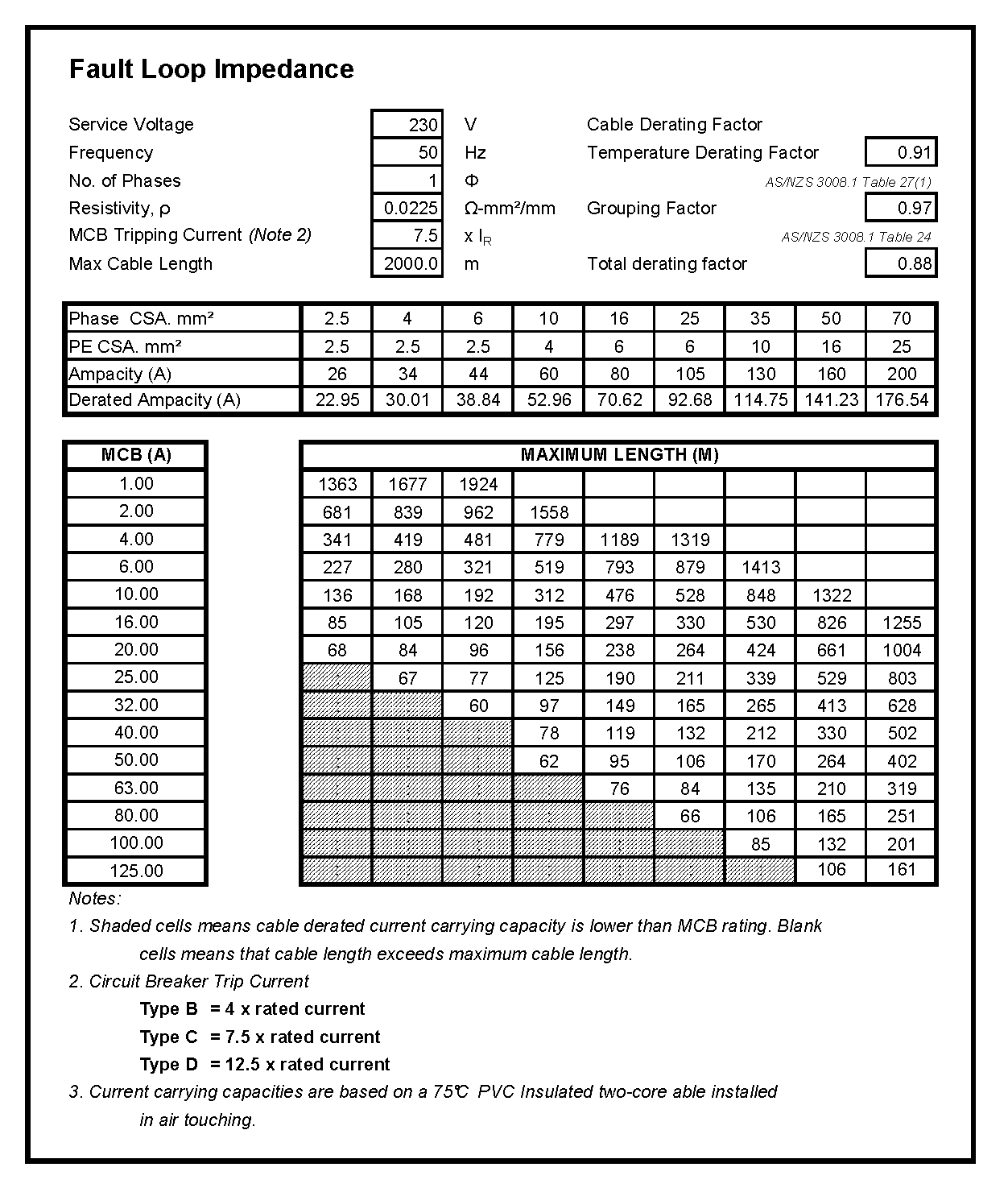Note: This is the second part of a series of tutorials for cable selection.
We have done cable selection based on voltage drop or length limitation in this tutorial.
Another factor to consider in selecting cables is to ensure that the circuit protection device, a circuit breaker or a fuse will be able to disconnect the circuit in the event of an earth fault.
Check your local regulations to ensure compliance.
Just like in the previous tutorial, we will be using a worksheet to calculate the maximum lengths of cables to ensure that the circuit protection device will trip when an earth fault or ground fault occurs in your installation.
There are new parameters added in this worksheet:
- Resistivity - the value was for copper
- Maximum length
- Circuit breaker tripping current
- Type B - 4 x Rated Current
- Type C - 7.5 x Rated Current
- Type D - 12.5 x Rated Current
Select the type of circuit breaker you need to use depending on the type of load you have. Normally, Type C is the most commonly used while Type D is for heavy duty loads.
Most of the time - voltage drop is the prevailing criteria in cable selection, however, there are times that despite passing the voltage drop requirement, the cable size selected fails on fault loop impedance.
In this case, it is best to consider the economics of using a larger cable or using a residual current device (RCD) to take care of earth fault. I reckon the later will be cheaper.

